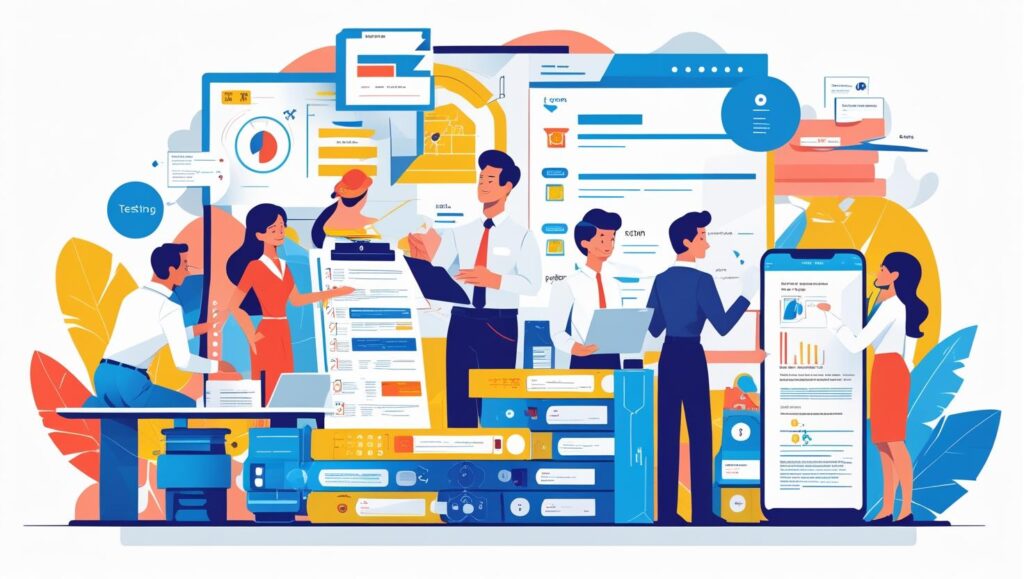The rapid development of digital technologies like automation, the Internet of Things (IoT), and artificial intelligence (AI) is causing a significant upheaval in the global testing and certification services sector. The testing and certification ecosystem, which was formerly defined by manual procedures, drawn-out inspection cycles, and paper-based reporting, is currently changing into a more accurate, efficient, and agile system driven by data intelligence and intelligent connection.
At the front of this change is artificial intelligence. From consumer electronics and healthcare to automotive and aerospace, AI-powered tools and algorithms are improving the speed and accuracy of testing procedures in a variety of industries. Large datasets gathered during product testing can be analyzed by machine learning models, which can then spot patterns, deviations, and abnormalities that human inspectors might not see right away. This not only improves defect detection but also enables predictive quality assurance, where potential failures can be identified and addressed before products reach the market. By automating test result comparison against international standards, cutting down on manual review time, and speeding up product time-to-market, artificial intelligence (AI) in certification enables faster compliance verification.
Download PDF Brochure @ https://www.marketsandmarkets.com/pdfdownloadNew.asp?id=5352498

Real-time monitoring and data collecting throughout testing and certification processes are made possible in large part by IoT. Smart sensors and connected devices are being incorporated into machinery, production settings, and goods themselves to provide ongoing performance, safety, and legal compliance monitoring. These streams of real-time data are sent to centralized systems for instantaneous analysis, facilitating more dynamic risk assessment and quicker decision-making. IoT-enabled devices, for instance, may track machine vibrations, temperature, and pressure in real time in industrial settings, guaranteeing that equipment remains within safety limits and only initiating alarms or inspections when required. By reducing downtime, this predictive maintenance strategy is taking the place of planned inspections.
The operating environment of testing and certification services is being further transformed by automation. Complex, repetitive testing operations may now be carried out with high accuracy and consistency using automated test benches and robotic equipment. These technologies can replicate stress, fatigue, and performance conditions on items significantly more effectively than manual techniques. Automation improves repeatability and expedites testing cycles, both of which are critical for preserving the integrity of certification results across batches and regions. Automated testing guarantees that every component is assessed under uniform settings in safety-critical industries like aircraft and medical devices, lowering human error and enhancing adherence to strict international requirements.
Another innovation made possible by AI, IoT, and automation that is altering the testing and certification landscape is digital twins, which are virtual copies of actual systems or goods. Before physical prototypes are constructed, digital twins enable testing scenarios to be reproduced and verified in virtual settings. This enables early certification of design parameters, drastically cuts costs, and shortens the development period. Digital twins may also continually evaluate the performance of products in the field by incorporating real-time data from IoT sensors, guaranteeing that they maintain certification standards over the course of their lifecycle.
As automation and connectivity have improved, remote testing and virtual audits have grown in popularity. Inspectors and auditors can now do evaluations remotely without having to be physically present at the testing site thanks to AI-assisted video analytics, smart glasses, and augmented reality. In global supply chains, where goods are produced and evaluated in several locations, this is very beneficial. In addition to saving money on travel and related expenses, remote services improve certifying bodies’ ability to respond quickly to customer needs.
The development of integrated testing and certification platforms that consolidate data, documentation, and compliance records is another outcome of the convergence of automation, IoT, and AI. From the first design validation to the final certification and market release, these systems provide end-to-end visibility into the product testing process. Businesses can generate audit-ready reports instantly, get automated notifications on regulatory changes, and monitor their compliance status in real time. Organizations are able to reduce the product development lifecycle and satisfy increasing regulatory requirements because to this efficiency and openness.
The demand for quick, affordable, and trustworthy testing and certification services will only increase as companies continue to develop and embrace smart technology. Testing laboratories, certification organizations, and quality assurance departments are now able to meet these needs and promote innovation and continuous improvement across industries thanks to the integration of AI, IoT, and automation.
See Related Semiconductor Reports:
Test and Measurement Equipment Market by Automated Test Equipment, Spectrum Analyzers, Oscilloscopes, BERT, Modular Instruments, NDT Equipment, Machine Vision Inspection Systems and Machine Condition Monitoring System – Global Forecast to 2029
Fire Protection System Testing, Inspection, and Certification (TIC) Market by Service Type (Testing, Inspection, Certification), System Type (Fire Alarm Devices, Fire Detection Systems, Sprinkler Systems), Application and Region – Global Forecast to 2028